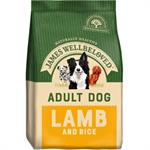
JAMES WELLBELOVED LAMB & RICE ADULT DOG FOOD 15KG
The James Wellbeloved Lamb and rice adult diet is a great maintenance diet for adult dogs.
Are you buying Pallet quantities for Delivery? |
||
| Yes, I am buying Pallet quantities for Delivery* | No, i will be using Click and Collect* | |
| * Please be aware that switching to Pallet only delivery or Click and Collect will clear your basket. | ||
Red Mite Powder is effective repellent combinations to be applied to poultry as a proactive 0n bird deterrent to infestation.